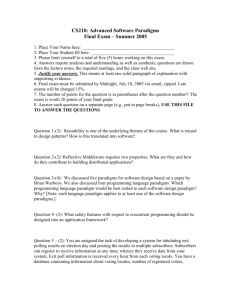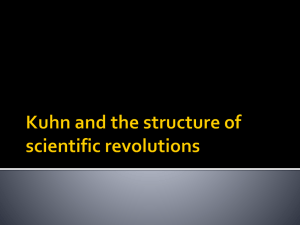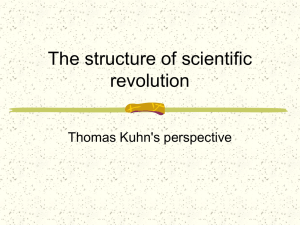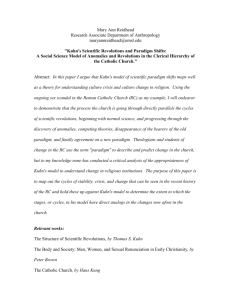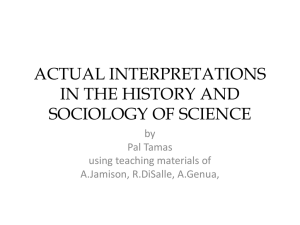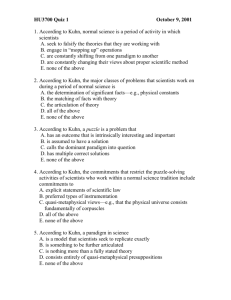Additional File 1: A Comparison between meta
advertisement
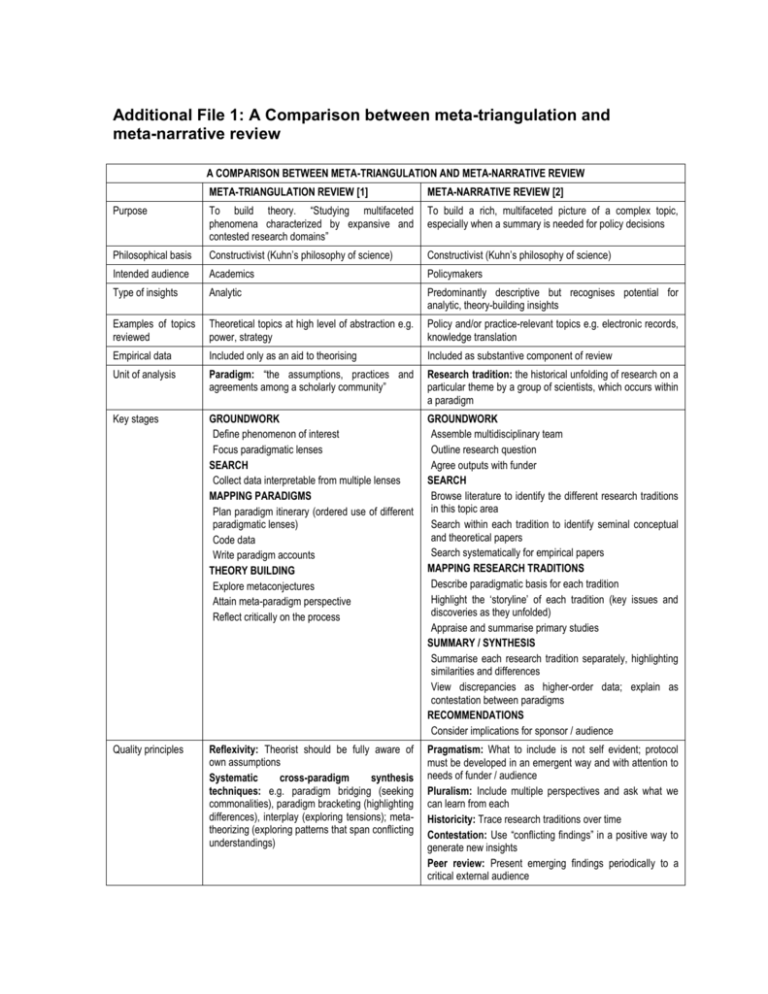
Additional File 1: A Comparison between meta-triangulation and meta-narrative review A COMPARISON BETWEEN META-TRIANGULATION AND META-NARRATIVE REVIEW META-TRIANGULATION REVIEW [1] META-NARRATIVE REVIEW [2] Purpose To build theory. “Studying multifaceted phenomena characterized by expansive and contested research domains” To build a rich, multifaceted picture of a complex topic, especially when a summary is needed for policy decisions Philosophical basis Constructivist (Kuhn’s philosophy of science) Constructivist (Kuhn’s philosophy of science) Intended audience Academics Policymakers Type of insights Analytic Predominantly descriptive but recognises potential for analytic, theory-building insights Examples of topics reviewed Theoretical topics at high level of abstraction e.g. power, strategy Policy and/or practice-relevant topics e.g. electronic records, knowledge translation Empirical data Included only as an aid to theorising Included as substantive component of review Unit of analysis Paradigm: “the assumptions, practices and agreements among a scholarly community” Research tradition: the historical unfolding of research on a particular theme by a group of scientists, which occurs within a paradigm Key stages GROUNDWORK Define phenomenon of interest Focus paradigmatic lenses SEARCH Collect data interpretable from multiple lenses MAPPING PARADIGMS Plan paradigm itinerary (ordered use of different paradigmatic lenses) Code data Write paradigm accounts THEORY BUILDING Explore metaconjectures Attain meta-paradigm perspective Reflect critically on the process GROUNDWORK Assemble multidisciplinary team Outline research question Agree outputs with funder SEARCH Browse literature to identify the different research traditions in this topic area Search within each tradition to identify seminal conceptual and theoretical papers Search systematically for empirical papers MAPPING RESEARCH TRADITIONS Describe paradigmatic basis for each tradition Highlight the ‘storyline’ of each tradition (key issues and discoveries as they unfolded) Appraise and summarise primary studies SUMMARY / SYNTHESIS Summarise each research tradition separately, highlighting similarities and differences View discrepancies as higher-order data; explain as contestation between paradigms RECOMMENDATIONS Consider implications for sponsor / audience Quality principles Reflexivity: Theorist should be fully aware of own assumptions Systematic cross-paradigm synthesis techniques: e.g. paradigm bridging (seeking commonalities), paradigm bracketing (highlighting differences), interplay (exploring tensions); metatheorizing (exploring patterns that span conflicting understandings) Pragmatism: What to include is not self evident; protocol must be developed in an emergent way and with attention to needs of funder / audience Pluralism: Include multiple perspectives and ask what we can learn from each Historicity: Trace research traditions over time Contestation: Use “conflicting findings” in a positive way to generate new insights Peer review: Present emerging findings periodically to a critical external audience Reference List 1. MW Lewis, AJ Grimes: Meta-triangulation: Building theory from multiple paradigms. Academy of Management Review 1999, 24: 672-690. 2. T Greenhalgh, G Robert, F Macfarlane, P Bate, O Kyriakidou, R Peacock: Storylines of research in diffusion of innovation: a meta-narrative approach to systematic review. Soc Sci Med 2005, 61: 417-430.


